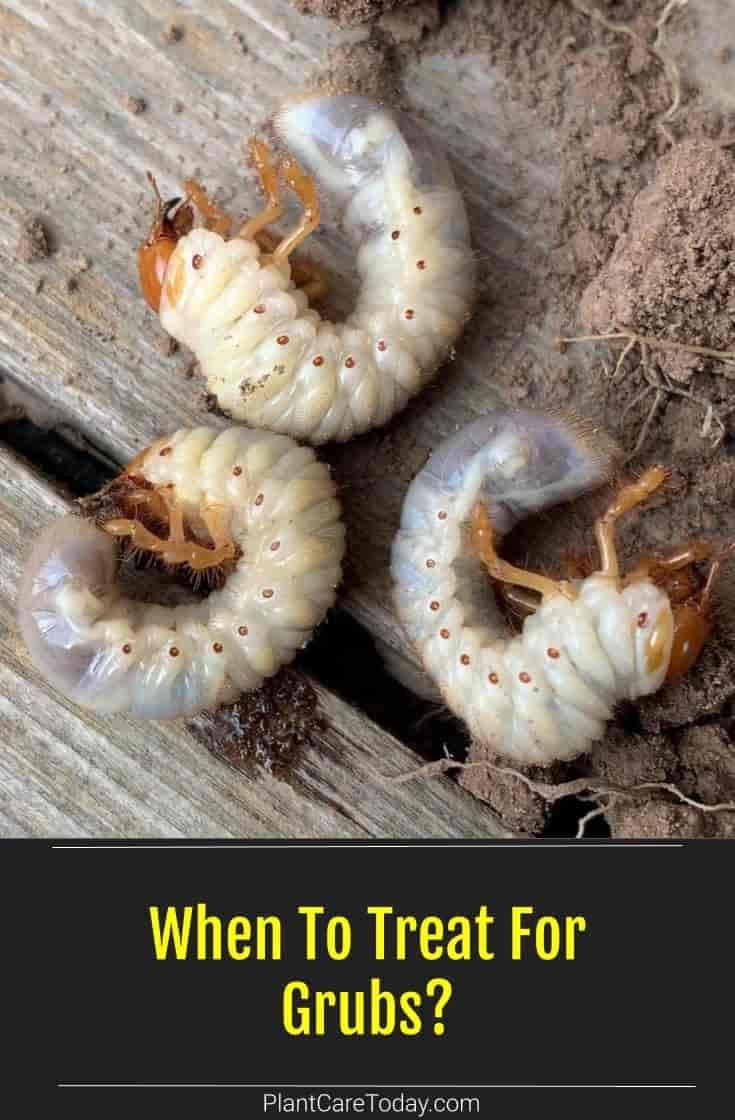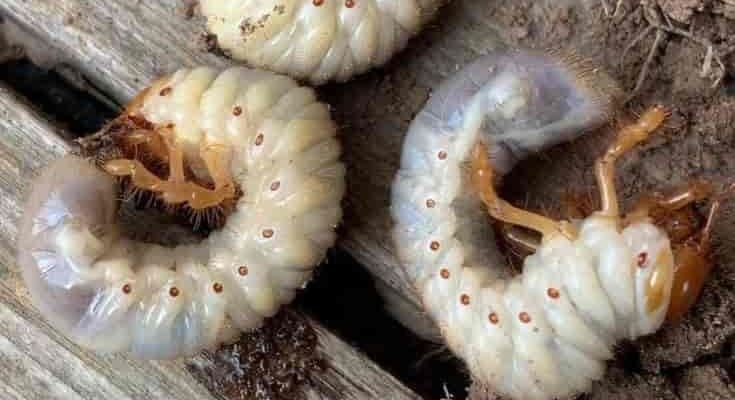
So, when should you take action against these lawn marauders? Honestly, it’s all about understanding the life cycle of the grubs, which is why I’m here to break it down for you. You might be wondering about the best products to use, and there are plenty of options available. But first, let’s dive into when you need to be on the lookout, so you can protect your grass from these little lawn thieves.
Understanding Grub Worm Life Cycle
To tackle grub worm infestations effectively, it’s important to know what you’re up against. Grub worms typically go through several life stages: they hatch from eggs, grow into larvae, and eventually turn into adult beetles. The whole process generally happens in one year, and their activity varies by season.
In the spring and summer months, grubs are busy munching away on grassroots, causing your grass to wither and turn brown. This is the time when the damage is most noticeable. As they emerge, they can destroy large areas quickly. Once fall rolls around, they start burrowing deeper into the soil to survive the colder months. So, understanding when these stages occur can help you decide when to act.
The Best Time to Treat Grub Worms
Timing is everything when it comes to treating for grub worm infestations. The most effective time to apply preventive treatments is in late spring and early summer, roughly around May to June. During this period, grubs are closer to the surface and actively feeding.
Applying treatment at this time allows the insecticide to target the young larvae before they get a chance to do serious damage. You could think of it as catching them before they grow up to be real nuisances! If you wait until you notice damage, it might be too late to stop the infestation effectively.
Why Late Spring and Early Summer?
During late spring, soil temperatures start to rise, which signals grubs to hatch from their eggs. By the time summer hits, they are in their peak feeding phase, making them vulnerable to treatments. Using a product specifically designed for grubs can help reduce their population significantly.
Here’s the kicker: if you treat the lawn during this time, you’ll set yourself up for a healthier lawn in the months to follow. In fact, many lawn care pros will tell you that maintaining healthy grass in the summer can make it more resistant to grub infestations.
Fall Treatment Options
While late spring and early summer are prime times for treatment, fall (September to October) can also be a good window, especially for preventive measures. As temperatures drop, grubs begin to dig deeper into the soil. During this time, applying a treatment can help protect your lawn against any future infestations.
You might wonder, “How does that work?” By using a product that targets the grubs while they’re deeper in the soil, you can reduce their population before winter arrives. The idea is to create a barrier that prevents new adults from laying eggs the following spring.
Fall vs. Spring Treatments
Both times have their benefits, but spring treatments are typically more effective for immediate results. Fall treatments focus more on prevention. If you’re unsure which approach to take, consider your lawn’s history. If you’ve had issues with grubs in the past, a fall treatment coupled with a spring follow-up might just be your best plan of action.
Choosing the Right Products
Now you probably want to know what products to use for your treatments. There are several options available, including both chemical and organic treatments. **Chemical treatments** usually contain ingredients like *imidacloprid* or *chlorantraniliprole*, which are effective at killing grubs but may affect other beneficial insects too.
On the other hand, **organic options** like *nematodes* or *Diatomaceous Earth* can be gentler on the environment while still targeting those troublesome grubs. When selecting a treatment, always read the label carefully to ensure it’s the right fit for your lawn’s needs.
Application Tips
Regardless of the product you choose, follow application instructions closely. Here are a few quick tips:
- Apply before heavy rainfall to help the product soak into the soil.
- Water the lawn lightly after application to activate the treatment.
- Be mindful of the temperature; some products work best in cooler weather.
Following these steps helps ensure a more effective treatment.
Signs of Grub Infestation
Recognizing the signs of a grub infestation early can save you a lot of frustration. The first thing to watch for is patchy areas of grass that look wilted or brown. If you notice areas that are especially spongy when you walk on them, that’s a red flag.
Another classic sign is the presence of birds or other animals digging into your lawn. They see the grubs as a tasty snack, and their digging often leads to further damage to your grass. If you’re seeing these signs, it’s time to spring into action!
How to Monitor for Grubs
Checking for grubs is simple. You can grab a small shovel or trowel and dig up a square foot of soil in damaged areas. If you find more than a few grubs (typically around 5 or more), it’s best to treat your lawn. Honestly, the sooner you catch these pests, the easier it’ll be to restore your lawn’s health.
Maintaining a Grub-Free Lawn
Once you’ve dealt with the grub worm situation, you’ll want to maintain a healthy lawn to deter future infestations. Regular lawn care practices such as aeration, overseeding, and proper watering can create an environment that’s less inviting for grubs.
If your lawn remains healthy and vigorous, it can fend off pests naturally. Plus, during fall, consider planting grass types that are less appealing to grubs. It’s all about creating a balance that works for your landscape!
Long-Term Strategies
In addition to preventive treatments, try to limit practices that attract beetles, like leaving lights on at night. Also, cleaning up any fallen fruits or debris can discourage beetles from laying eggs in your lawn. Remember, a proactive approach is vital in keeping your lawn lush and green.
In conclusion, treating for grub worms is all about timing and technique. By focusing your efforts in late spring or early summer, and considering fall treatments, you can effectively manage these pests. Keeping your lawn healthy through solid maintenance practices will further help in creating a grub-resistant yard. With a little bit of attention and care, your lawn can thrive, and those pesky grubs won’t stand a chance!

